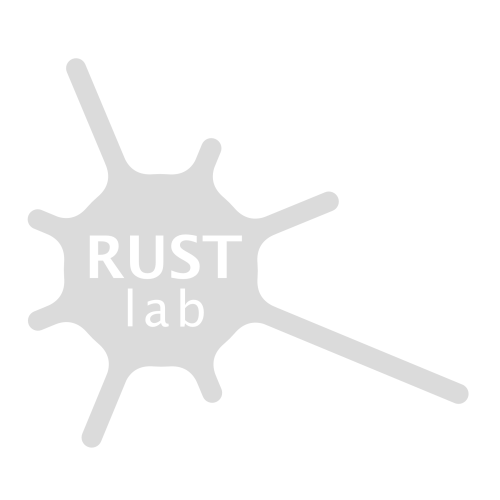Comment by Estrid Sørensen on Phoebe Sengers‘ lecture “Time on the Edge of Infrastructure”
To “modernise…It means we’re moving forward, modernisation is inevitable, things are moving forward…. And behind us is archaism…. As soon as you are told: Modernise, you immediately panic because you say to yourself: I’ll miss the train” (0:42-1:06).
“If you want abundance, freedom, emancipation without modernity, what does it look like? It’s what I call ‘environmentalising’, but no one knows exactly what it means, precisely because it’s a huge shift in the definition of time, the passage of time, the separation between past and future, etcetera…. We cannot divide the past and the future based on the idea of what is on the wrong side of the push to modernization. That’s over now” (7:09-7:30)
De Chenay & Truong, 2021: Interview with Bruno Latour: The End of Modern
Change Islands. What a name. Located in north-eastern edge of the island of Newfoundland, the islands were first populated by British colonial settlers in the early 1700’s. The past years Change Islands have been the field site of Phoebe Sengers’ ethnography of infrastructures. While waiting for her ethnography to be published, we were offered exciting insights in her research that were also crucial lessons about infrastructuring indeterminacies, the theme of this terms’ RUSTlab lectures.
Three stories:
1. The Factory
Originally, Change Islands settlers lived from fishery. Fishing was lucrative in the summer when the sea was not frozen. The life on the island adapted to this seasonal rhythm. The literature on time describes the temporal rhythm as “task-orientation.” No need to get up in the morning when the sea is frozen. Together with Newfoundland and Labrador, Change Islands joined Canada in 1949. The provincial government was committed to drag Newfoundland and Labrador “kicking and screaming into the 20th century”. An electric fish drying plant was established on Change Islands, which the community ran cooperatively and whose design principles suited local conditions. The provincial government did not appreciate this solution. They wanted the factory to be privately owned and to run according to what the literature calls “clock-orientation”: to work at a set, controlled, steady, and and uniform pace, indicated by the clock. The support to the factory was withdrawn, and it closed.
2. The Telegram
A key object of Phoebe Sengers’s ethnography is an old telegram from the islanders to the provincial government with a complaint about the lack of infrastructure projects on Change Islands. In other communities, roads were constructed, electricity was installed, and telephones were arriving. But the government of Newfoundland and Labrador had decided that infrastructure projects should not be supported on Change Islands; its fate was to die of infrastructural neglect, and parts of its population were resettled to other areas of Newfoundland and Labrador. However, the town fought back. When electricity finally arrived, it was celebrated that the “future has arrived to Change Islands.” But electricity came with the temporality of monthly bills, a temporality out of sync with the task-oriented time – and income – of the islanders. This made it difficult for islanders to thrive economically.
3. The Ferry
You can only leave Change Islands by boat. Large periods of the year, the sea is frozen and no access is possible. This was yet another temporality that shaped the life of the islanders. They needed to be self-sustaining both in terms of food, and in terms of medical service. The installation of a ferry changed that. It brought new temporalities, around which life came to be shaped. The medical service came with the ferry at regular intervals, which required of the islanders to make appointments ahead of time. Fixed schedules came with the new traffic infrastructure.
Different means of production, different forms of ownership and provisions, and different infrastructures come with different temporalities. These are not only a practical matter, they are also moral issues, about how to be a modern citizen. The modern government would not risk a non-modern cooperative factory to become successful, nor would it adapt to non-modern payment rhythms.
Under the headline of “infrastructuring indeterminacies” we are this term investigating both how infrastructures can be indeterminate and how indeterminacies can be infrastructured. We ask, if infrastructures can facilitate what is new, unexpected, contingent, breaking down, and barely even possible? Phoebe Sengers’ ethnography answers this question in unexpected ways. The infrastructures – and the lack of infrastructures – on Change Islands facilitate the breaking down of rhythms of everyday life and making them barely possible. This is surely unintended consequences of the well-meaning modernisation efforts of the Newfoundland and Labrador Government.
Susan Leigh Star famously stated that infrastructures are only visible when they break. Phoebe Sengers study adds, and at their edges. It makes us realise that Star’s statement is uttered from the “centre of the world” where infrastructures work most of the time. At the edges of the world, where it is an issue whether infrastructures should be installed, to where infrastructures only almost reach, and where they don’t seem to fit, infrastructures become very visible, also when they “work”. I opened this comment with some quotes from the second video of an Interview with Bruno Latour that is accessible on arte.tv. Phoebe Sengers’ ethnography resonates so well with Latour’s thoughts and shows very concretely the consequences both of installing modern infrastructures and of not doing so. Modernity is all about time, about specific compositions – and infrastructuring – of temporality. Latour emphasizes that when modernity ends, no-one knows what comes next, what temporalities, what new rhythms we may shape, and how. We live in a time of indeterminate infrastructuring. Phoebe Sengers’ ethnography is an important contribution to the key task of this time, to think about how to shape what comes next – based on what was and what is at the edge. To infrastructure indeterminacies.
